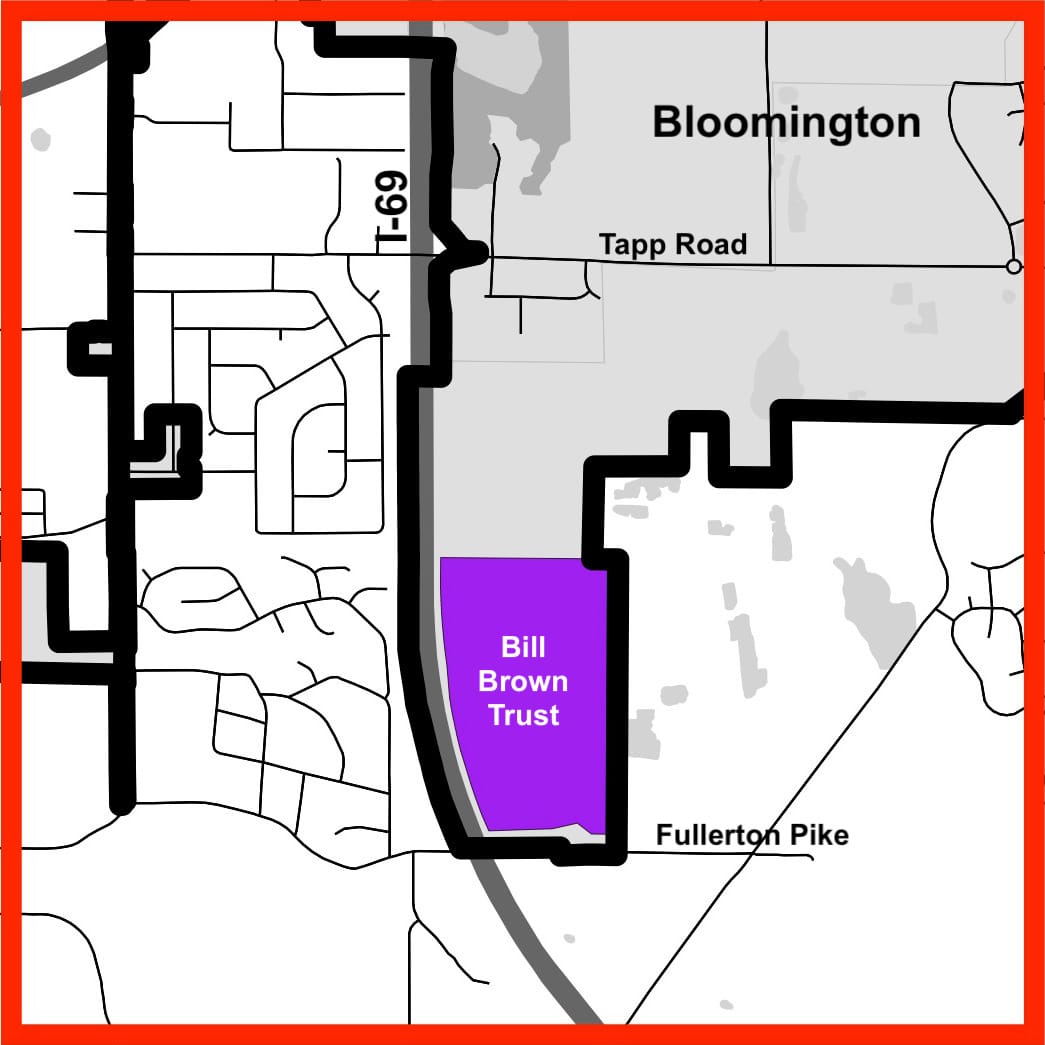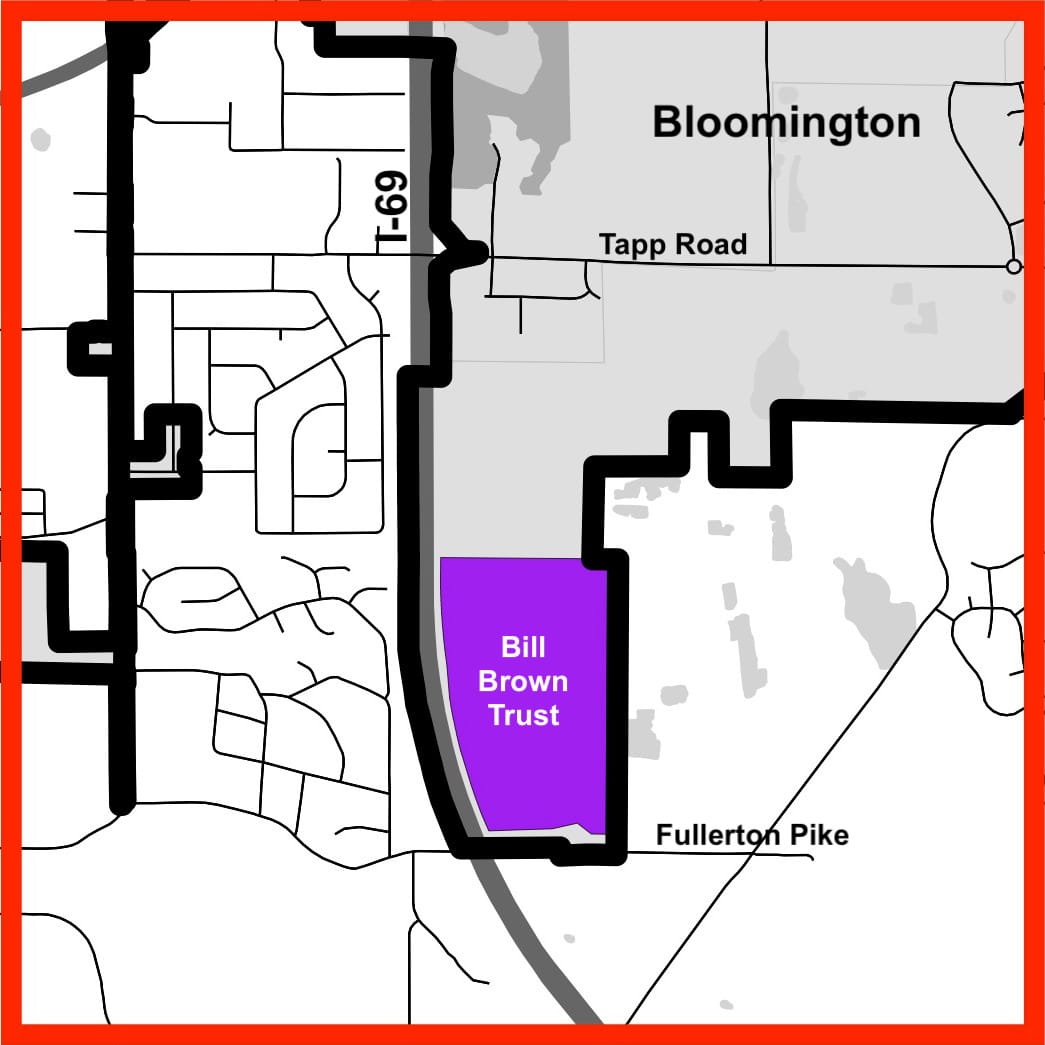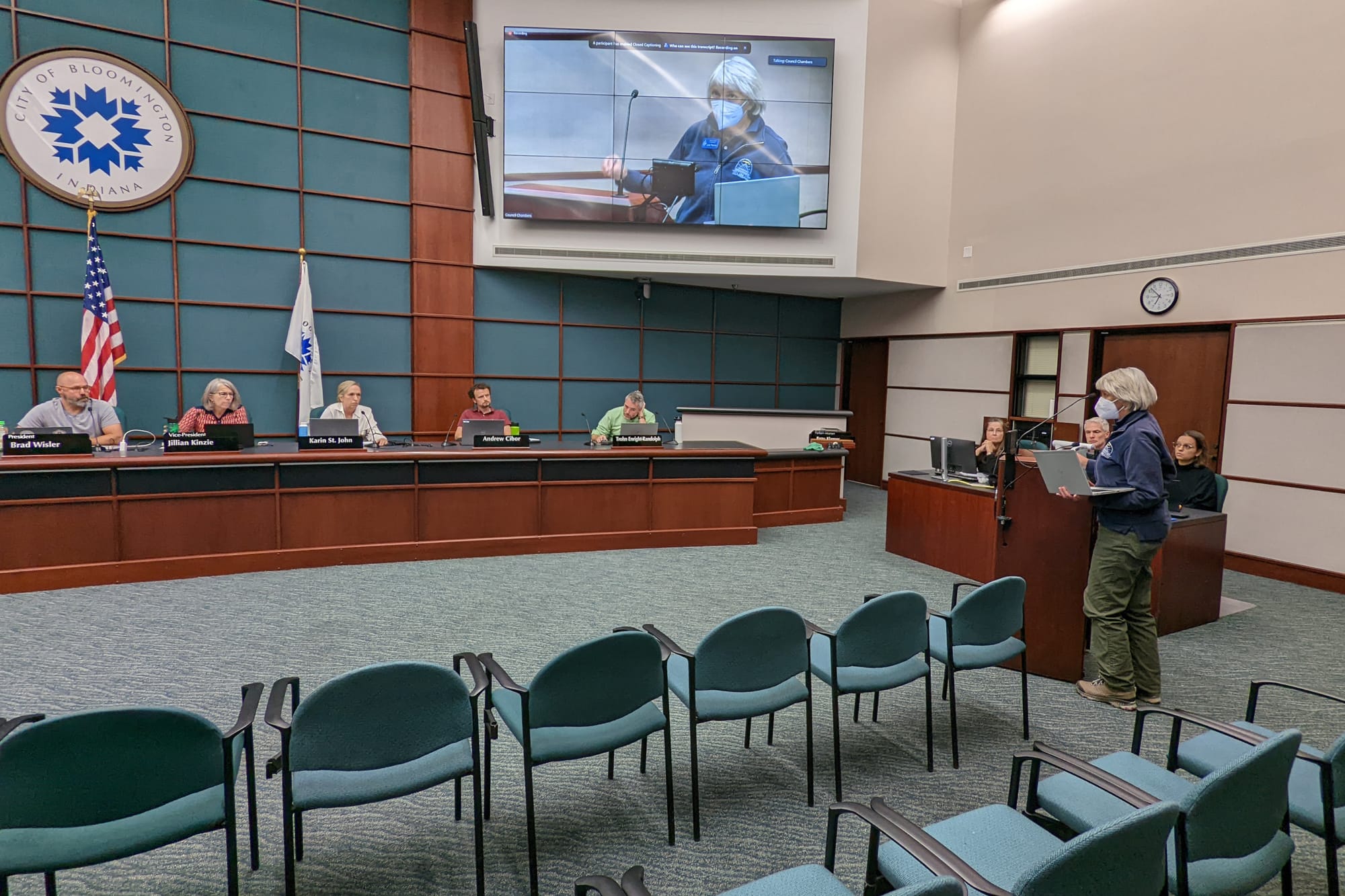First rezone hearing for potential new jail highlights employment center versus institutional use




On Monday, a lot of ground got covered at the Bloomington plan commission’s first hearing about a rezone request from Monroe County government.
The rezone is needed if a new jail is to be built in the southwest corner of the city.
But one topic emerged as a big concern for plan commissioners: Should they depart from the “employment center” designation for the area that is reflected in the city’s comprehensive plan?
The current mixed-use employment (ME) zoning for the 87-acre parcel squares up perfectly with the comprehensive plan’s designation. The county’s request would change the zoning of the land from mixed-use employment (ME) to mixed-use institutional (MI). Use of the property as a jail would not be allowed under ME, but could be allowed under MI. A jail is a “conditional use” under MI zoning.
President of the plan commission, Brad Wisler, put it like this: “A large chunk of our employment in Bloomington comes from those uses that the ME zone is designed for.” Wisler added, “If you look at things like Cook, Catalent, et cetera, if we ever want to attract another one of those types of employers, this seems like a prime spot for it.”
The second hearing in front of the plan commission is set for Nov. 14. The plan commission’s recommendation will feed into the Bloomington city council’s decision on the rezone.
The question of whether to build a new jail facility was answered for county officials by two studies of the criminal justice system, which they commissioned in 2019.
County attorney Jeff Cockerill quoted from one of the reports in his presentation to Bloomington plan commissioners: “The jail facility is incapable of consistently ensuring and sustaining constitutional levels of inmate care and custody.” About that line, Cockerill said, “That is nothing a government attorney ever wants to read about his client’s facility.”
Cockerill told plan commissioners the current jail was built 1984 for 128 inmates. The jail currently has 262 secure beds and has been operating under a federal order since 2008, based on its condition, Cockerill said.
The decision to build a new facility to replace the one at 7th Street and College Avenue in downtown Bloomington is reflected in the current request to rezone the 87-acre parcel in the southwest part of town. The county has made a $10-million offer to purchase the land, contingent on the rezone.
The choice of the location is also contingent on the outcome of a $3,300 geological study by Hydrogeology, Inc., which county commissioners approved last week. During public commentary, the neighboring property owner to the northeast of the location, Duncan Campbell, expressed concerns about the karst features of the site. Duncan is concerned that significant construction on the site could affect stormwater runoff.
At Monday’s hearing, county attorney Jeff Cockerill and board of commissioners president Julie Thomas sketched out some of the background about the choice of location and the need for a parcel as big as 87 acres.
Cockerill told plan commissioners that the considerations for the site location included parcels that are big enough—at least 20 acres, but preferably over 40 acres. The size of the parcel is in part related to the need to buffer the facility from residential neighborhoods, Cockerill said.
The needed acreage is also related to the county’s hope eventually to locate additional facilities besides the jail on the site, like court services, substance use disorder rehabilitation facilities, and supportive housing. Those additional facilities also point to a choice of MI (mixed-use institutional) zoning, which includes medical clinics as a permitted use and supportive housing as a conditional use.
Bloomington plan commissioners indicated some interest in getting more details about acreage needs for the facility. Cockerill pointed to a report from DLZ, which the county had hired to do an analysis.
DLZ’s report includes the following conclusion: “A site of at least 25 acres should adequately support the anticipated size of the new Monroe County Correctional Facility.” The report continues: “Accommodations of possible additional future building facilities to accommodate Courts, Community Corrections/Work Release, Juvenile Detention, Diversion Center, Treatment Facility, etc. will require additional acreage—above the recommended 25 minimum acres for the Correctional Facility.”
Cockerill said the 87-acre parcel was the only finalist property located inside Bloomington city limits. County commissioner Thomas told city plan commissioners, “We heard from the city administration the desire to keep this facility inside the city limits.”
About Thomas’s statement that the city administration wanted a new jail to be located inside Bloomington’s boundaries, development services manager Jackie Scanlan expressed some caution: “I don’t think that’s something staff has confirmed.” Scanlan added, “Not to say that it isn’t true, but that’s not something we put out there.” Scanlan said it’s a point that can be clarified for November’s second hearing.
The topic of other possible locations inside the city was floated. Based on the extent of existing areas of the city that are zoned MI (mixed-used institutional), Scanlan confirmed that for a parcel the size that the county wants, a rezone request would be required. That is, there aren’t any parcels already zoned MI that are big enough to fit the needed size for the county’s planned jail facility.
One of the considerations given for site location was transportation connections. The lack of current public transportation service to the area was a concern noted in the planning staff report. Cockerill told Bloomington plan commissioners that talks with Bloomington Transit (BT) had started. “We’re not setting anything in stone. But they indicated that if this were to be approved…then they would work with us to provide access.”
Cockerill said BT would be a part of the planning process for the site design.




Comments ()